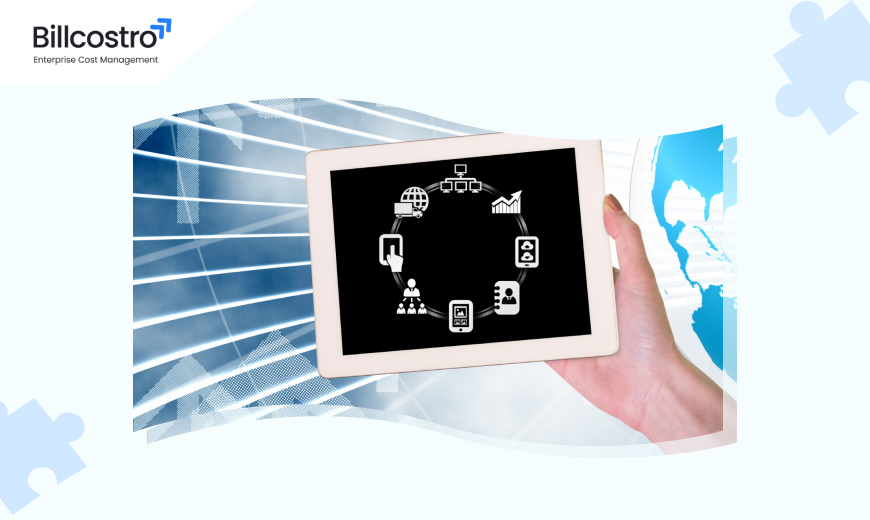
July 24, 2025, 5:28 a.m.

When it comes to cost optimization in a corporate setting, it is essential not only to cut down on the expenses but to do it smartly. One of the most underrated aspects that hold immense potential for cost-cutting is T&E management. Organizations are relentlessly chasing growth, but if there is no proper management and monitoring of business travel then there will be no growth.
Besides, employee reimbursements may stealthily drain the company's finances. Travel and expense management automation is the solution that helps to avoid these cost leaks and increase operational efficiency.
Traditional expense management systems usually depend on spreadsheets, paper receipts, and fragmented communication between employees, finance teams, and vendors. This results in:
Errors caused by human beings in entries and approvals
Reimbursements that are late, thus affecting employee morale
Invisibility into spend patterns
False claims that are not detected
These inefficiencies get accumulated over time and become a significant barrier to cost control and compliance
Travel and expense management automation is the application of digital technologies and software to streamline business processes, particularly those related to employee travel expenses. Such tools perform the following tasks automatically:
Filing an expense report and submitting the claim
Receipt scanning and categorization
Policy compliance checks
Approval workflows
Integration with accounting software and payroll
In this way, the organizations are empowered to make better choices, improve accuracy, and reduce the occurrence of fraudulent or repeated expenses by digitizing the
1. Real-time Expense Tracking
Via automated systems, each and every single expense—be it a cab ride, hotel booking, or food—is logged in real time. This allows finance teams to have access to a live view of where their budget is going, and it can even alert them to any expenses that are not in line with the policy without any delay.
2. Policy Enforcement and Compliance
Expense management software is built on customizable policies, therefore it permits you to set up decision-making parameters that reflect the travel and finance regulations of your company. It also guarantees that employees provide the claims that are within the allowed limits and categories, which, in turn, leads to the reduction of non-compliant spending.
3. Time and Productivity Gains
Automated Travel and Expense tools get rid of repetitive jobs like manual data entry, paper-based receipt submission, and approval reminders. Employees and finance professionals can divert their energies from doing strategic jobs to reconciling work that usually requires hours.
4. Fraud Prevention and Error Reduction
The processes of receipt digitization, AI-based flagging, and audit trails assure that no one duplicates their claims, overcharges, or incurs unauthorized expenses without being caught.
5. Better Vendor and Travel Partner Management
Using consolidated data of spend, you can pick out travel vendors that you are using the most and negotiate better corporate rates.
6. Improved Cash Flow and Budgeting
If expenses are being tracked in real time and at the same time, approvals are carried out in a speedy manner, businesses will be able to forecast cash
Travel and Expense Automation: A Cost Efficiency Driver
Let’s break down how T&E automation actively contributes to cost efficiency:
Area | Manual Process | Automated T&E |
| Receipt Handling | Paper-based, error-prone | Digital capture and categorization |
| Expense Reports | Delayed submission, inconsistent formats | Real-time, standardized submissions |
| Policy Enforcement | Manual checks | Automated flags and alerts |
| Approval Workflow | Delayed, email-dependent | Streamlined, rule-based workflows |
| Analytics & Reporting | Static reports | Live dashboards with actionable insights |
According to industry studies, companies that implement expense automation see up to 40% reduction in processing costs and 25% fewer policy violations.
In the process of searching for the best expense management automation tools, if you want to find out the list of features here are some of them:
Mobile access and cloud integration
OCR for receipt scanning
Custom approval workflows
Multi-currency and GST compliance (essential for Indian businesses)
Integration with ERP and payroll systems
Real-time reporting
A perfect solution should also be scalable and easy to use, particularly in case of expanding businesses or remote teams.
Modern tools go beyond automation and bring AI-driven insights to the table. These include:
This level of intelligence transforms T&E management from a reactive task to a proactive cost control function.
Billcostro: Smarter Expense Automation for Indian Businesses
Billcostro is an innovative expense management automation platform designed specifically for the Indian startups, SMEs, and enterprises and it is compatible with their needs. It directly targets the problems of traditional expense processes and comes with these features:
Automated expense tracking with real-time insights
GST invoice validation and reconciliation
Advance payment control and milestone-based releases
Customizable approval workflows suited to each department
Seamless integration with accounting systems like Tally and Zoho
Mobile-first interface for employees on the move
If you are focusing on vendor payments, travel claims, or employee reimbursements, Billcostro will consolidate all of these under a single, clean, and auditable dashboard—thus drastically improving visibility and control.
In the years after 2025, companies simply cannot overlook cost leaks that are hidden and caused by inefficient travel and expense (T&E) systems and which are no longer identifiable. Automating travel and expense is definitely not optional—it is an essential for businesses that aim at driving efficiency, compliance improvement, and growth readiness.
Scaling your business by selecting the most suitable automation device such as Billcostro will not only help you to close the cost leaks but also energize your teams with swift workflows and practical insights. The outcome? An organization that is more agile, intelligent, and sustainable.